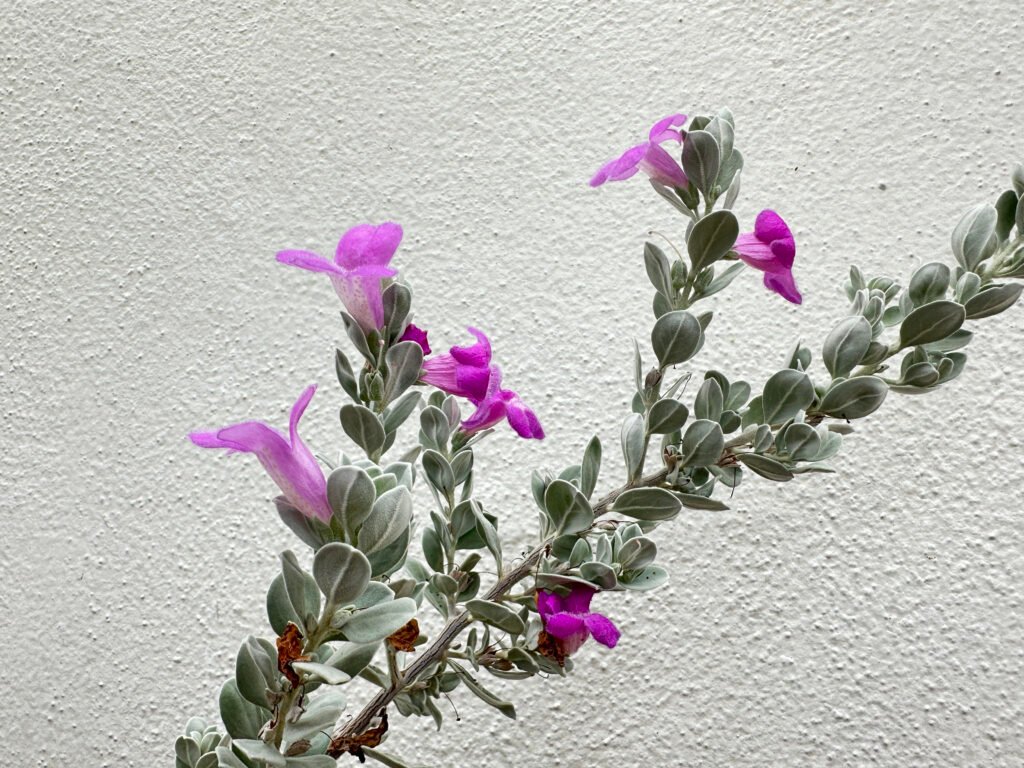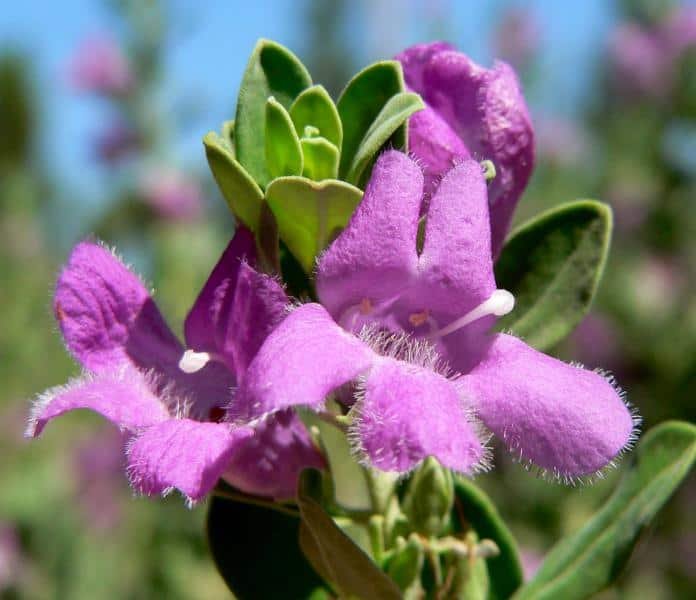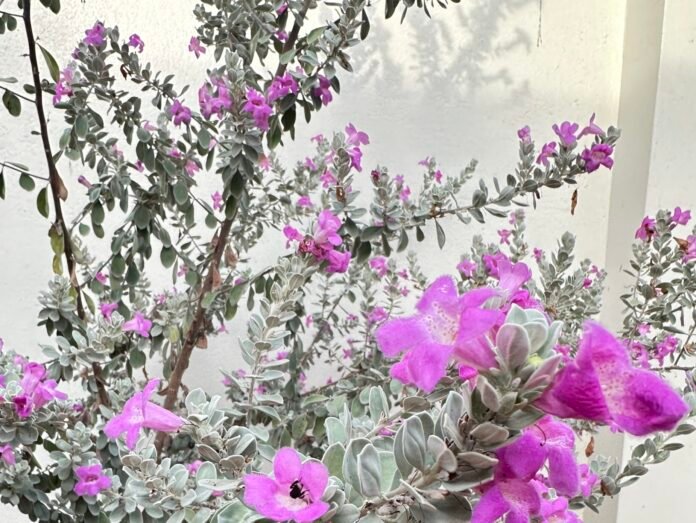Leucophyllum frutescens (Family: Scrophulariaceae)
Also known as: Barometer Bush, Texas Ranger, Purple Sage and Silver Leaf Sage
Origin: Southwestern U.S. and Northern Mexico
Written about further in The Medicinal Jungle, Volume II
“As to those rather diverse names, I have noted that, in fact, this plant’s blooms can arise as a result of changes in humidity, often before or after rain; know of no particular Texan more sagacious than the rest; am aware that the original Texas Rangers were unofficially created by Stephen F. Austin in 1823; recall that the “Riders of the Purple Sage” comes from the 1912 Zane Grey novel; and have read that the ancient Romans employed silver leaf as a symbol of wealth and status. So, this attractive bush’s names seems to address multifold, diverse, topical areas!”
All so noted, this beauty is not a true Sage and is distinct from the genus Salvia. Generally speaking, it’s probably most commonly thought of as a source of forage for cattle and a protected nesting place for birds.
Typically growing into a compact shrub of up to eight feet tall and as much as six feet wide, a grouping of several can make an attractive, low-maintenance screen or hedge. A sun lover, it is often used in xeriscaping. (Landscaping hint: Desert Marigold Baileya multiradiata], with its bright yellow flowers, is an outstanding companion for Texas Sage.)
Allow me to regress. Some know this bush as Cenizo – Spanish for ashen – referring to its silvery-gray foliage covered by tiny hairs. A Mexican folktale gives this name deeper meaning, telling of the resolution of horrible drought conditions – when the “waterholes had dried up, and death and starvation ruled the prairie” by the combined prayer of several vaqueros (cowboys).
A non-medicinal synopsis of the Texas Sage is that it: Has aesthetic appeal with vibrant flowers and silvery, fine-textured foliage which can add beauty and texture to landscapes (It’s genus name Leucophyllum means “with white leaves”); is a low-maintenance shrub being both drought-tolerant (a result of its aromatic oils and tiny hairs on its leaves, which minimize water loss) and resistant to pests and diseases; and its attraction to bees, butterflies and hummingbirds give it high marks in pollination support, contributing to garden biodiversity.
Rather similar to George Blanda, who played in the National Football League for 26 seasons, and Tom Brady, who played in 366 games through his 23-year career, Texas Sage is a tough and hardy sort, fighting and scraping out a life in a variety of rocky, rather inhospitable soils. But it does border on being a bit hydrophobic in that it cares not a bit for “wet feet” and requires good drainage for sustained healthfulness. It thrives best in alkaline soil, but can grow in soil with poor nutrients.


It is a great companion plant for, in and around one’s vegetable garden if growing Broccoli, Cabbage, Carrots, Cauliflower, and Rosemary in that it deters Cabbage moths, Carrot flies, and various nefarious beetle nasties such as the black flea beetle.
Edible in and onto itself? Yes, in fact it is – and I may just have to include it in my new recipe book series, “The Edible Jungle.”
Texas Sage has a strong leaf flavor that’s ideal for use in the preparation of meats, stuffings, and Italian dishes.
Beyond that, its dried leaves and flowers can be brewed into mildly sedative herbal tea, thought good as a bedtime drink or for treating colds. In fact, Native Americans brewed it for use, specifically to treat chills, congestion, coughing, fever, and even jaundice. Its further ethnobotanical applications have long been for treating all manner of respiratory ailments, ranging from bronchitis to tuberculosis, and aiding with digestion, while its leaves and flowers may have been used for all manner of wound treatment.
It has also been used in traditional medicine for cataracts, diarrhea, dysentery, and even liver disorders. Interestingly, based on that historical use knowledge, studies are presently ongoing regarding its potential hepatoprotective (liver-protecting) effects. Further laboratory analysis has already revealed that it has anti-microbial and anti-inflammatory qualities.
Another study published in PubMed explored the essential oils of Leucophyllum frutescens finding them to have inhibitory effects against certain enzymes. This means the decrease of some metabolizing functions – the conversion of food into energy, and our physiological
“building blocks” and removal of waste products from our systems. This can be beneficial when it comes to calorie restriction and its effects on our longevity.
No more sage thoughts!


